The 2017 Multistrada 1200 and 1200 S now boast improved performance and electronics with 160hp still on tap
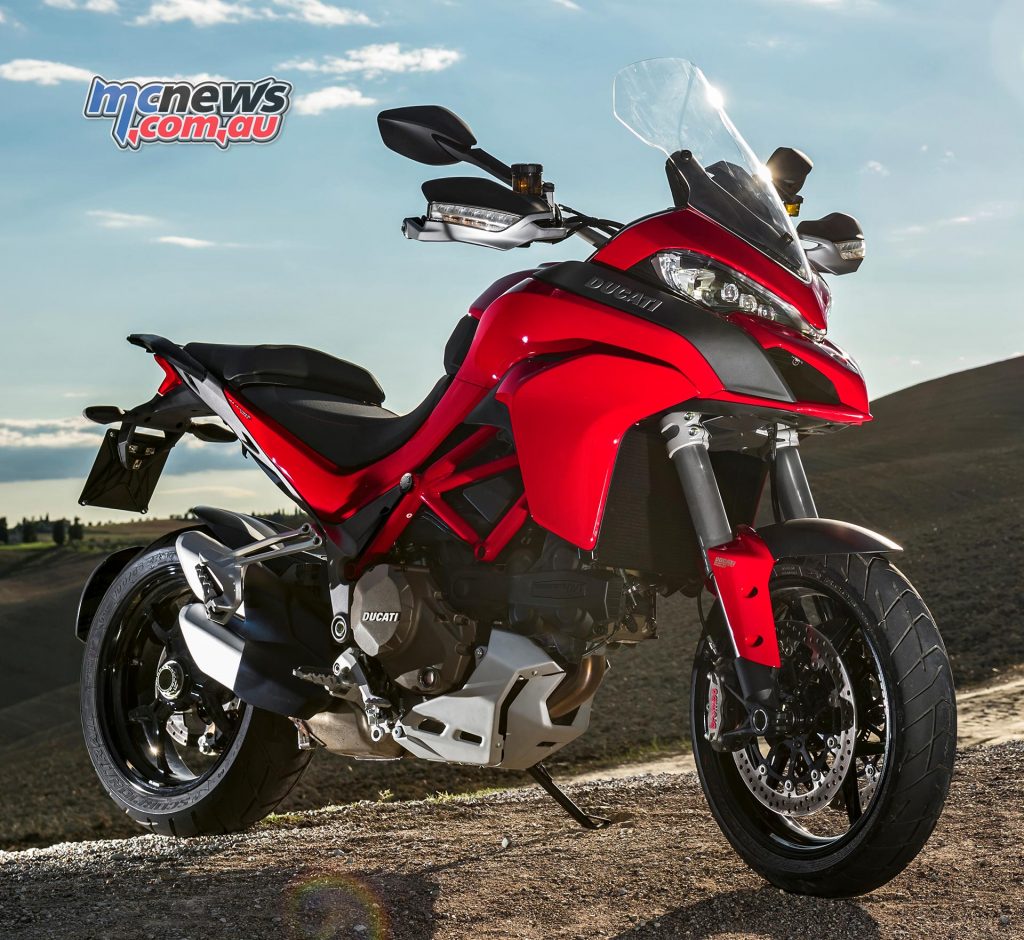
As soon as it was launched back in 2010, the Multistrada 1200 offered nothing less than four bikes in one: from sportsbike to long-distance tourer, from everyday runabout to enduro.
The 2017 continues to use the DVT system and also now features an airbox with a different air intake area and new engine settings. These changes have enabled the twin Testastretta DVT engine to optimise power delivery at mid rev range.
The Multistrada 1200 also sets an electronics benchmark with the Inertial Measurement Unit (IMU), developed by Bosch technicians, which dynamically measures roll and pitch angles as well as the acceleration on three axes; with this information, the Bosch IMU enhances both performance and safety.
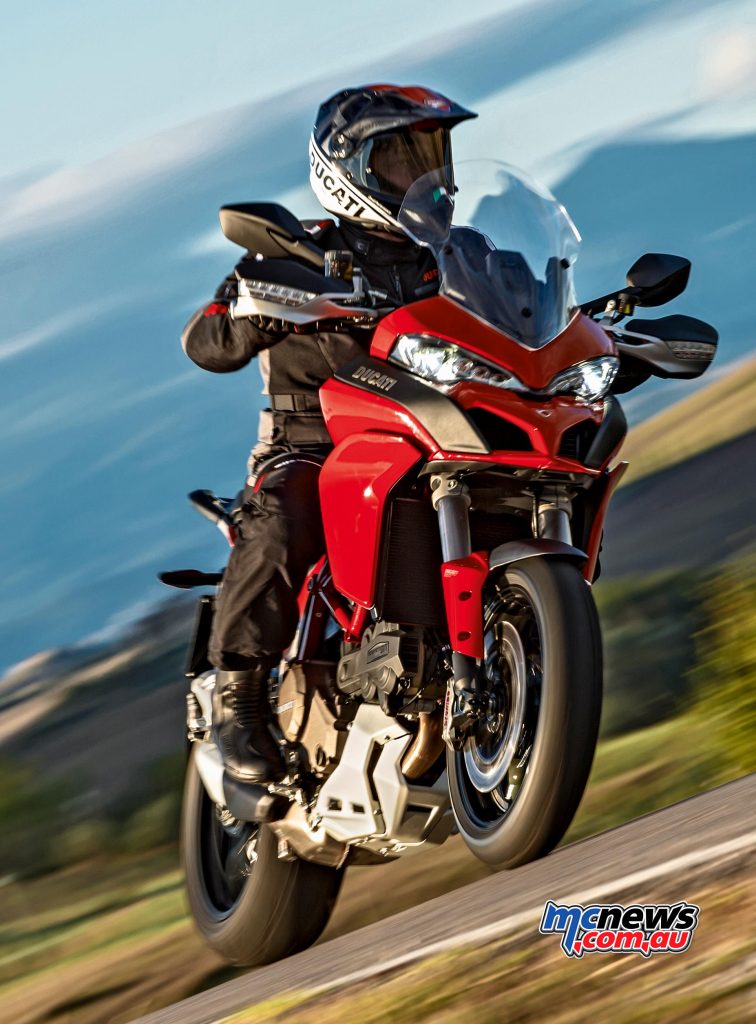
The Vehicle Hold Control (VHC) has been included as standard on the Multistrada 1200 and 1200 S. Lastly, the Bosch IMU inertial platform also interacts with the semi-active Ducati Skyhook Suspension (DSS) Evolution control system featured on the Multistrada 1200 S.
All models feature Electronic Cruise Control, which the rider can set as desired using controls incorporated in the switchgear on the left handlebar.
On the S version a Bluetooth module is included as standard: this activates the Ducati Multimedia System and can connect the bike to a smartphone for user-friendly control of basic functions such as receiving incoming calls, notification of text messages, or playing music via the handlebar controls and on-dash info.
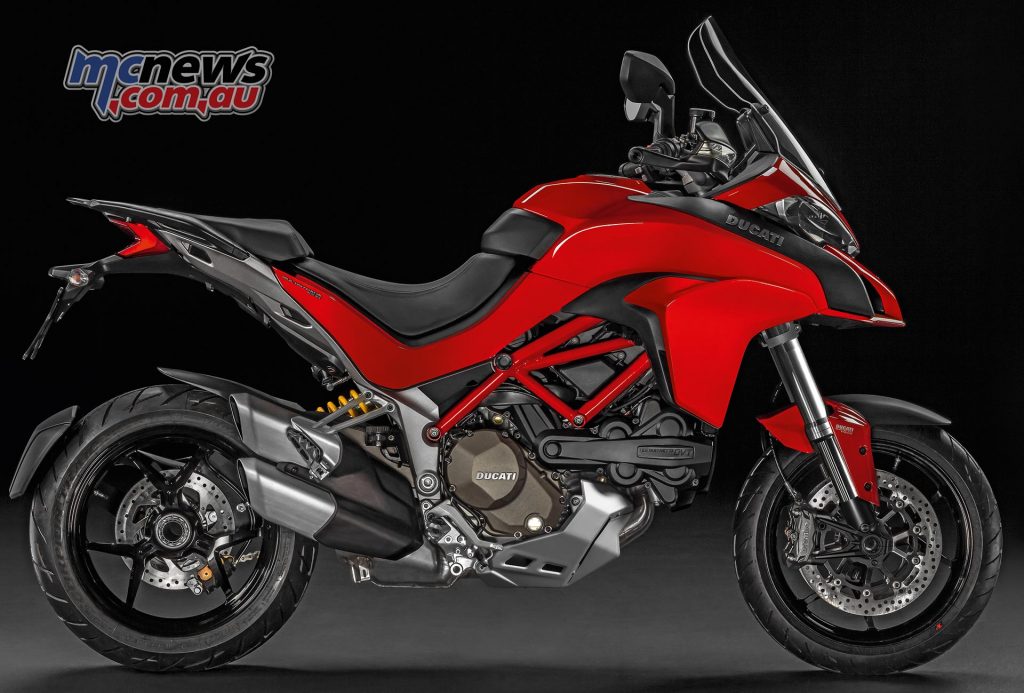
Main standard Multistrada 1200 features:
Multistrada 1200
- Colour – Ducati Red with red frame and black wheel rims
- Ducati Testastretta DVT engine
- Bosch IMU: Inertial Measurement Unit
- Bosch-Brembo ABS 9.1ME Cornering braking system
- Electronic cruise control
- Riding Modes
- Ride-by-Wire Power Modes (PM)
- Ducati Wheelie Control (DWC)
- Ducati Traction Control (DTC)
- Vehicle Hold Control (VHC)
- Height-adjustable seat
- LCD instrument panel
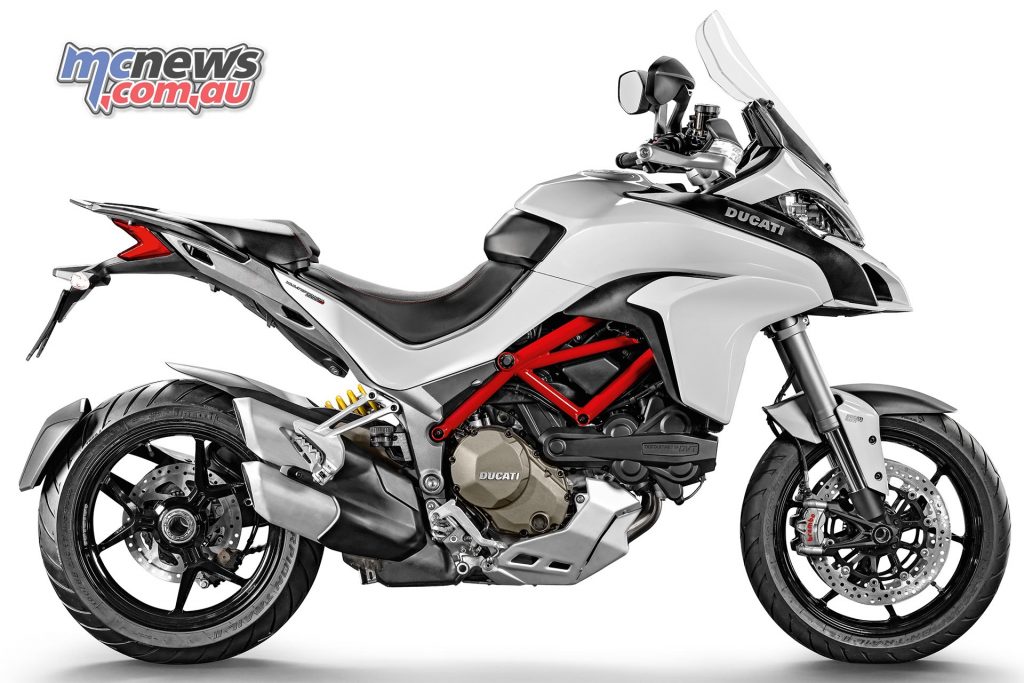
Multistrada 1200 S (and Multistrada 1200 S D-Air)
- Colours – Ducati Red with red frame and black wheel rims (1200 S and 1200 S D-Air), Iceberg White with red frame and black wheel rims (1200 S only), Volcano Grey, with red frame and black wheel rims (1200 S only)
- Ducati Testastretta DVT engine
- Bosch IMU: Inertial Measurement Unit
- Bosch-Brembo ABS 9.1ME Cornering braking system
- Front brake discs with diameter of 330 mm, Brembo M504 4-piston radial calipers
- Electronic cruise control
- Ducati Multimedia System (DMS)
- Riding Modes
- Ride-by-Wire Power Modes (PM)
- Ducati Wheelie Control (DWC)
- Ducati Traction Control (DTC)
- Vehicle Hold Control (VHC)
- Height-adjustable seat
- Electronic Sachs suspension (front and back) with the semi-active Ducati Skyhook Suspension (DSS) Evolution system
- Full LED headlamp with Ducati Cornering Lights (DCL)
- Instrument panel with 5” full colour TFT screen
- D|Air system (Multistrada 1200 S D|Air only)
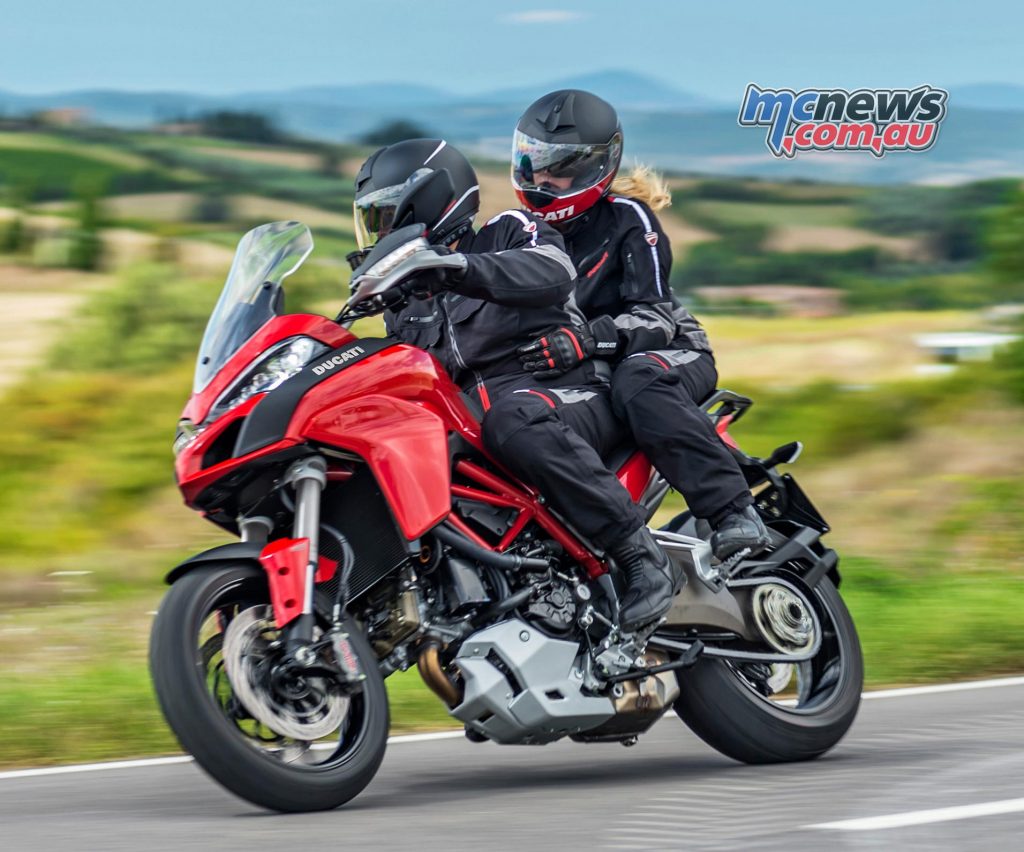
Personalisation Packs
- Touring Pack: heated grips, panniers and center stand
- Sport Pack: road-legal exhaust (homologated only for EU) Ducati Performance by Termignoni and carbon fibre front mudguard, machined-from-billet aluminium brake and clutch reservoir caps
- Urban Pack: top case, tank bag with lock and USB hub
- Enduro Pack: supplementary lights and Ducati Performance components by Touratech: engine protection bars, radiator guard, oil sump guard, bigger kickstand base and off-road footpegs
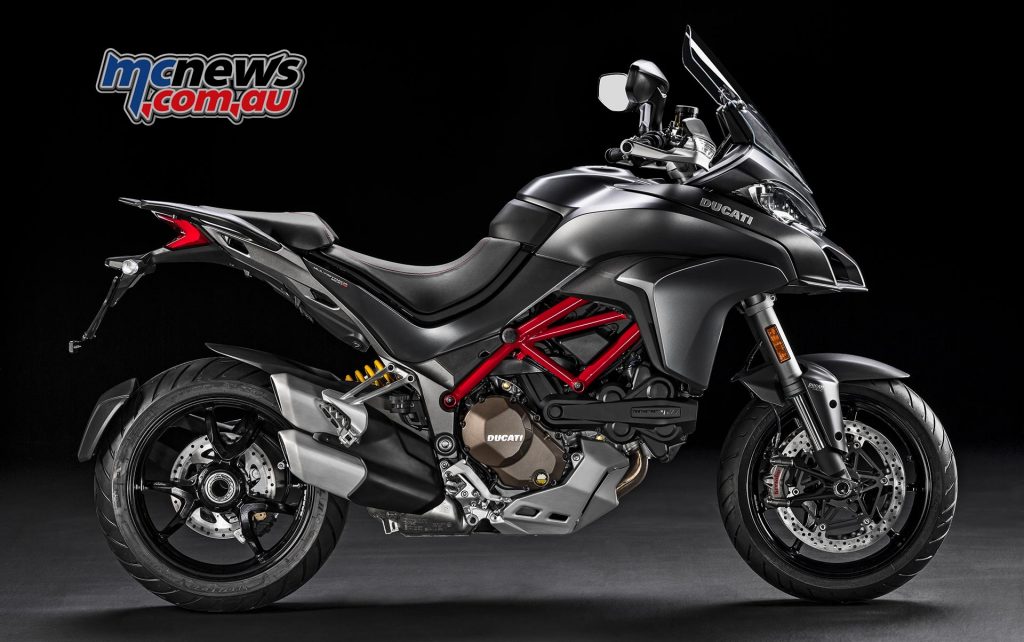
Ducati Multistrade 1200 ergonomics
Everything on the Multistrada 1200 has been designed for practicality and effectiveness. The rider’s seat is narrow at the front, allowing an easier reach to the ground, is also 20mm longer and offers 20mm of height-adjustment. The passenger seat is lower and the passenger grab handles are more ergonomic.
The windshield height adjustment system is more fluid and can be operated with only one hand. The Multistrada 1200 also has a dry weight of just 209 kg. Together with the bike’s optimal chassis set-up, this gives the Multistrada 1200 exceptional handling, crucial in sport riding and when weaving through city traffic or riding over uneven terrain.
This spacious bike can easily accommodate two people plus top case and panniers. The 1,530 mm wheelbase ensures optimal centring of the rider (and panniers, where attached), enhancing dynamic vehicle performance.
To underscore the multi-role nature of the Multistrada 1200 even further the ergonomics have been developed and tested to allow out-of-the-seat riding, essential for off-road use.
The footpegs have been fitted with rubber inserts to insulate against vibration but these can also be removed to provide serrated-edge footpegs for added grip with off-road boots.
The wide, tapered handlebars have also been designed to optimise comfort and to provide a dominant riding position without compromising tight turning performance and are mounted on damping blocks to filter out vibration and provide an optimal mix of comfort and road feel.
A roomy storage area under the passenger seat contains the tool kit, and manual, with space also for other personal items.
The windshield on the Multistrada 1200 is high and wide, its surfaces shaped to provide greater rider protection over long distances. It also features a 60mm vertical adjustment range: this is set with just one hand.
Two 12 V power sockets, one positioned immediately underneath the passenger seat and the other on the front section of the bike, are available: these can carry loads of up to 8 A (fused) and power items such as heated clothing, intercoms or mobile phone chargers.
Available as a Ducati Performance accessory, the GARMIN sat-nav is powered via a special connector near the instrumentation. A USB socket is also available in the under-seat zone; this can be connected to a smartphone.
Numerous optional features make the Multistrada perfect for long-distance touring: these include the stylish, roomy panniers, which are redesigned to enhance both style and practicality and are easily removable.
Other touring features include heated grips and the centre stand, which is useful when the bike is fully loaded.
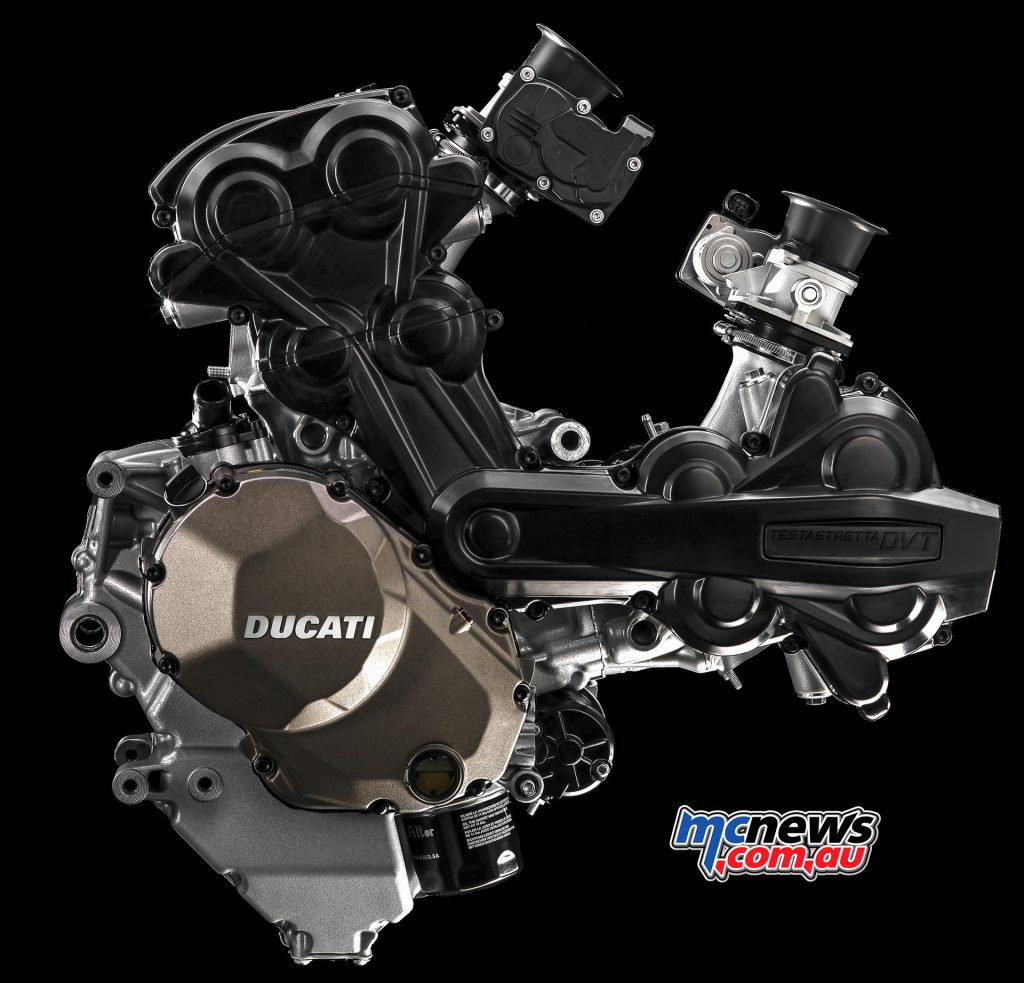
Ducati Testastretta DVT engine
By independently varying the timing of the camshaft that controls the intake valves and the camshaft that controls the exhaust valves, the DVT engine optimises high-rpm performance to provide maximum power.
At low-to-medium rpm, it smooths operation, making power delivery more fluid and boosting torque. In practice, this is an engine that changes its characteristics as rpm varies while complying with Euro 4 specifications and giving good fuel economy.
As might be expected, the Testastretta DVT engine uses the Desmodromic valve actuation system that has made Ducati’s Bologna-built bikes famous worldwide. This special system closes the intake and exhaust valves mechanically, with the same precision as they are opened.
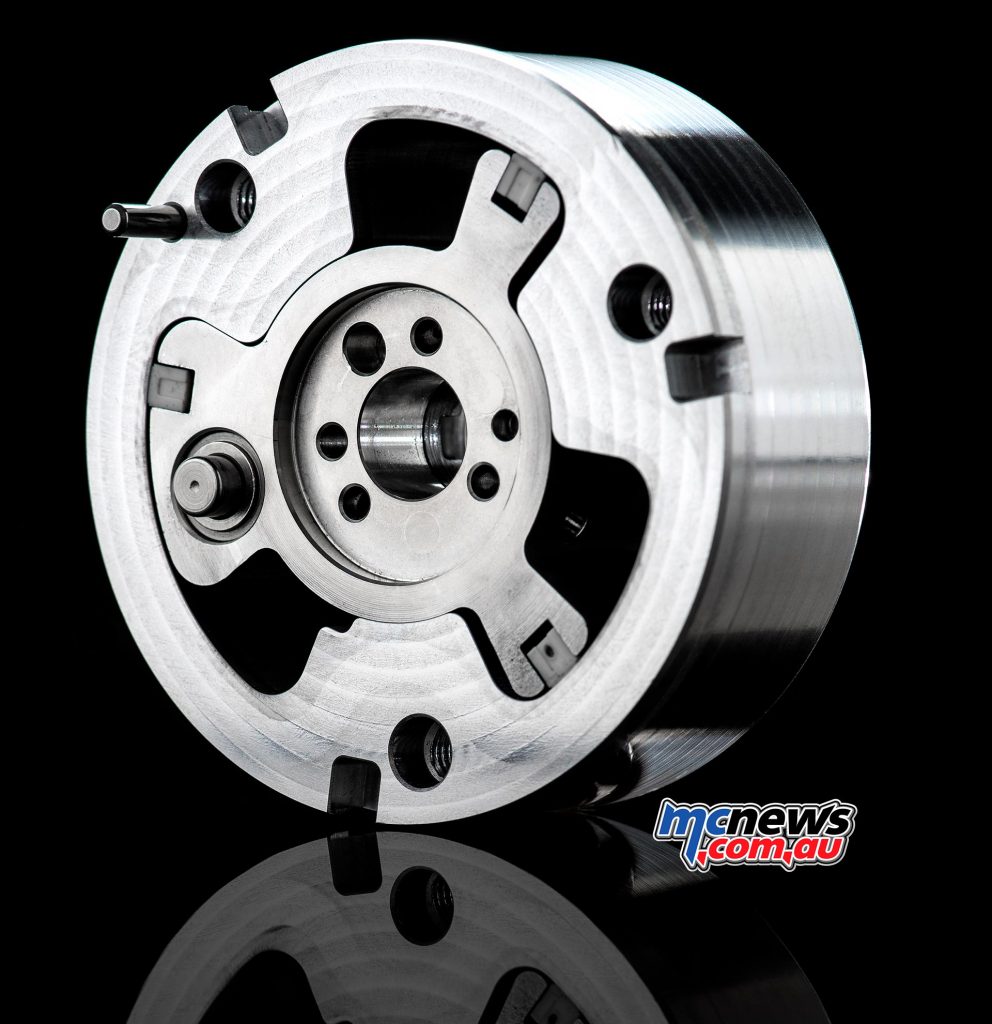
In the Testastretta DVT engine, Desmodromic valve actuation provides a clear advantage over traditional valve springs; at low revs the system requires less force because there are no springs to be compressed. This makes it possible to keep the individual valve timing adjusters compact, which minimizes their weight and allows them to be smoothly integrated.
With a bore of 106 mm and stroke of 67.9 mm (giving a total displacement of 1198cc) the Ducati Testastretta DVT puts out 160 hp at 9500 rpm and 136 Nm of torque at 7500 rpm, with very linear delivery. In fact, even at just 3500 rpm the available torque is already 80 Nm and remains near-constant, exceeding 100 Nm between 5750 and 9500 rpm.
The DVT system despite the increase in power, also decreases fuel consumption, which drops by an average of 8% over the riding cycle.
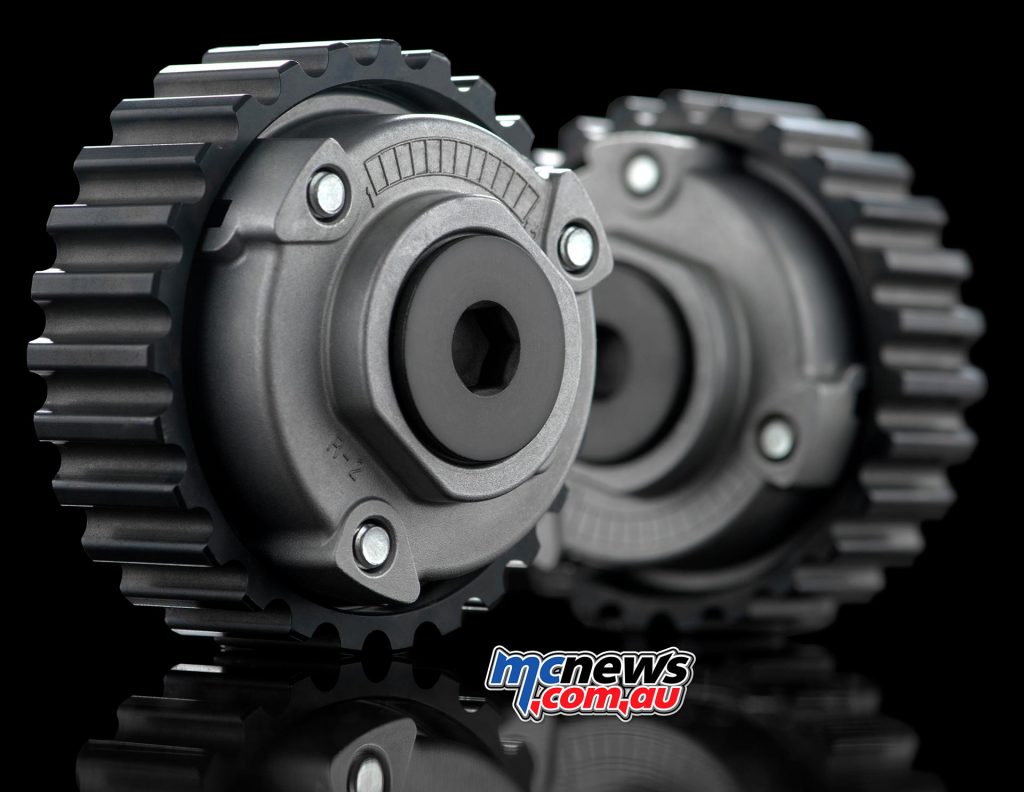
Fuel injectors positioned to direct their spray onto the heated rear of the intake valve instead of the relatively cooler intake duct wall maximise fuel vaporisation, improving combustion and smoothness.
The DVT is also equipped with the Dual Spark (DS) system, which uses two spark plugs per cylinder to enhance combustion efficiency and time. Each spark plug has independent ignition control to ensure optimisation throughout the rev range under all riding conditions.
Lastly, to maximize performance and minimize emissions, the Testastretta DVT also features a secondary air system. This allows a richer fuel mixture to be used without increasing emissions, by completely oxidizing unburnt hydrocarbons to keep HC and CO levels to a minimum.
The clutch on the Multistrada 1200 is of the oil-bath slipper type and can be operated with light effort at the lever, thanks to a progressive self-servo mechanism which allows a reduced clutch spring load.
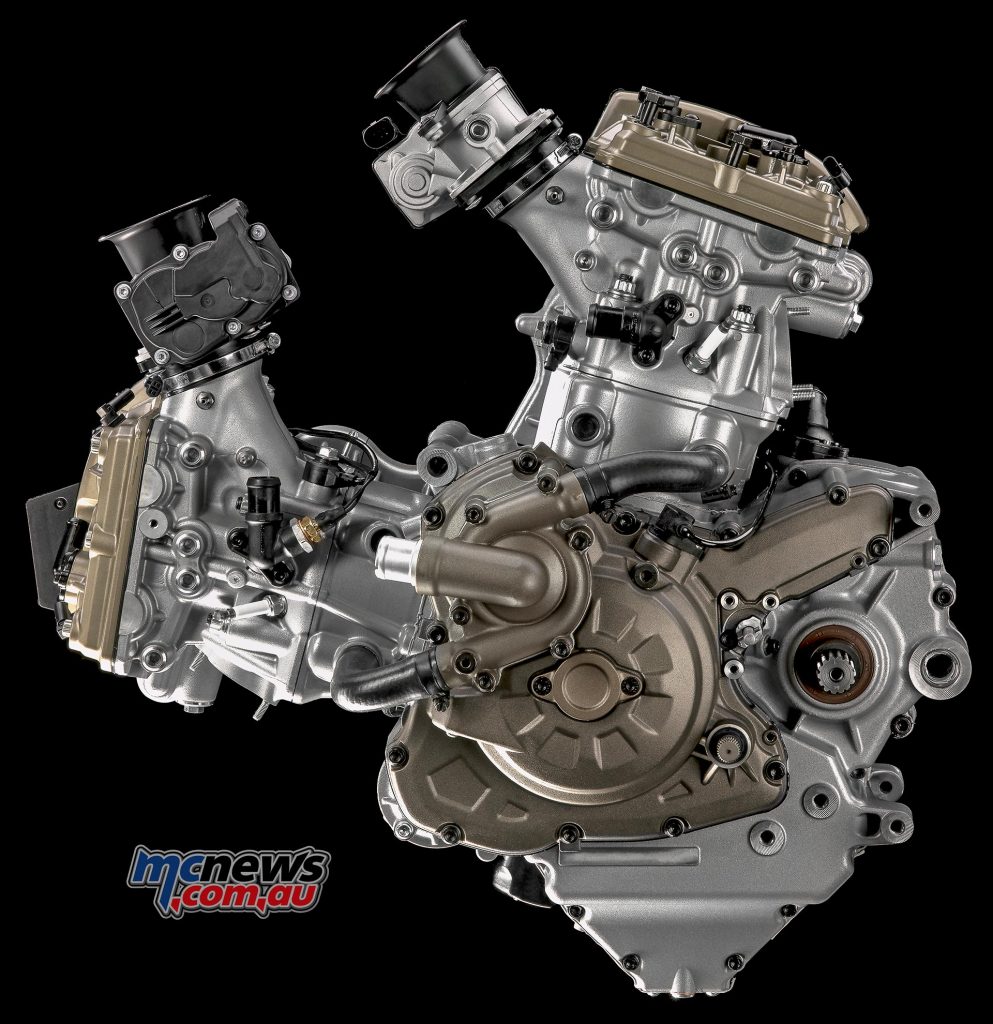
Upon deceleration, the same mechanism reduces pressure on the clutch plates, giving them a slipper effect to prevent hopping of the rear end during aggressive downshifts.
The exhaust system layout is based on two primary manifolds that merge directly in the single 2-chamber silencer; the latter, in addition to acting as a 2-1-2 collector, contains the catalytic converter.
From here exit two pipes directly to the light, compact silencers, which are side-mounted and feature aluminium alloy outer sleeves.
Ducati has reduced scheduled maintenance requirements, with routine maintenance intervals extended to 15,000 km (9,000 miles) (or one year) and valve timing adjustment to 30,000 km (18,000 miles), providing clear advantages for customers.
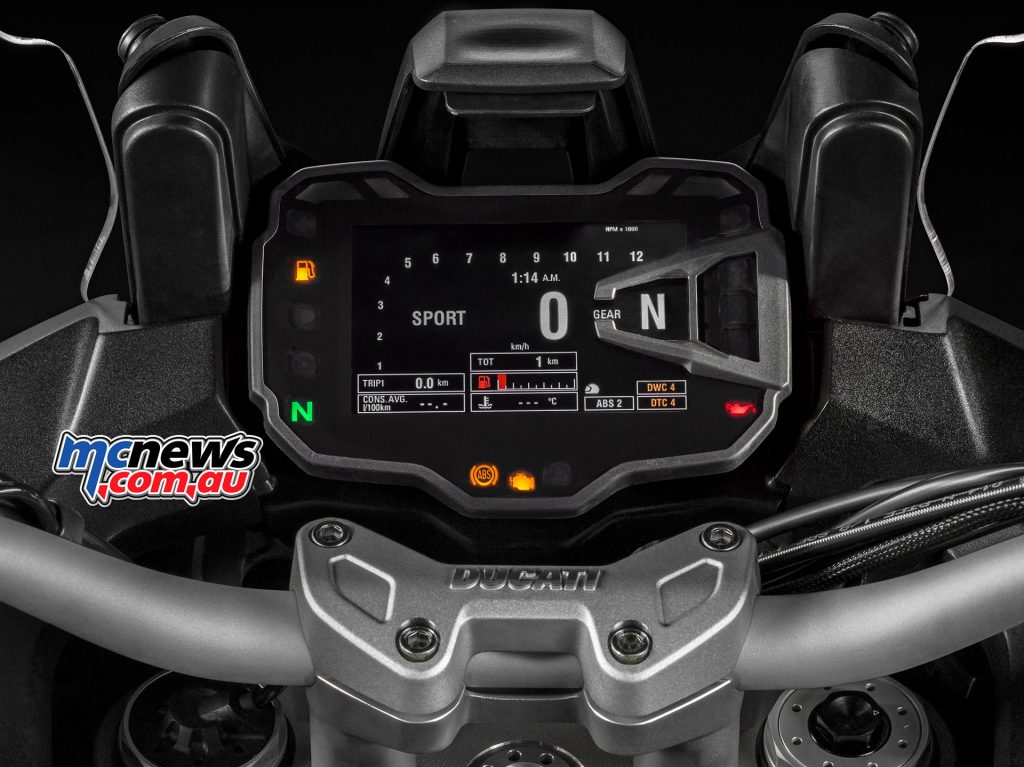
Ducati Multistrada 1200 Electronics
The introduction of the Bosch IMU (Inertial Measurement Unit) has reshaped the 4-bikes-in-1 concept that lies at the core of the Multistrada.
In addition to allowing implementation of all the electronic strategies already featured on the previous version, the new Multistrada 1200 also introduces Ducati Wheelie Control (DWC) and Cornering ABS.
The four Riding Modes (Sport, Touring, Urban and Enduro) are made even more effective as, on the Multistrada 1200 S, they are supported by the new Ducati Skyhook Suspension (DSS) Evolution.
This configures the suspension setup dynamically in response to different road and riding conditions, maintaining control, performance, and comfort at all times.
On the Multistrada 1200 engine output is controlled by a Ride By Wire system. Power is not adjusted directly via a throttle cable; instead, throttle body opening is regulated by the engine control unit after it reads and processes the Ride by Wire signal input. This means three different mappings can be used to adjust power delivery.
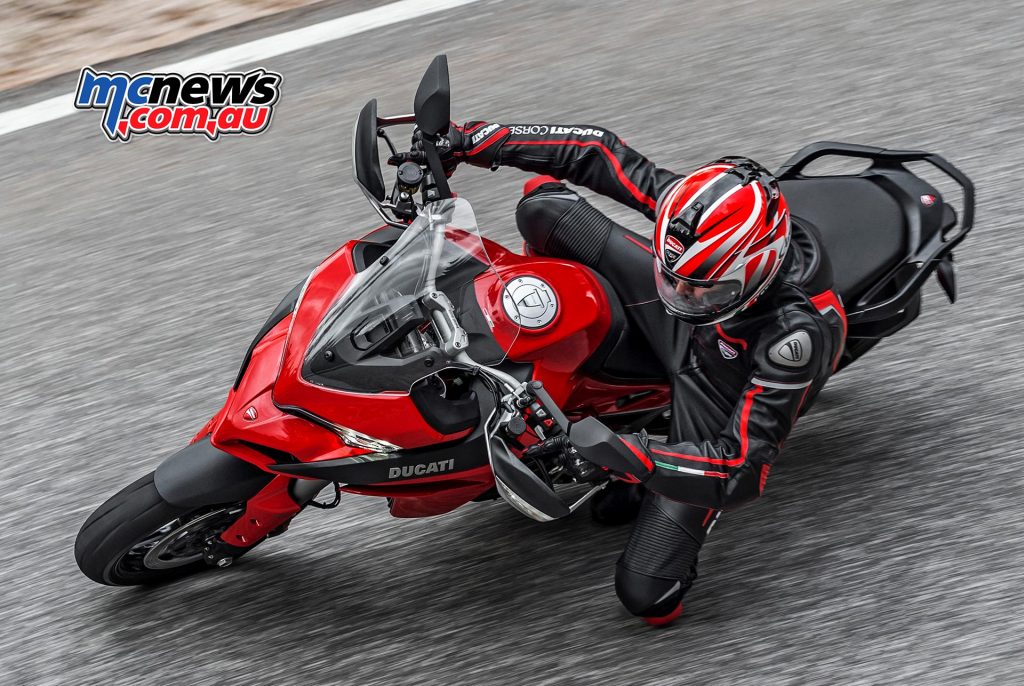
Sport Riding Mode: Selecting Sport Riding Mode provides a thrilling 160 hp and a breathtaking 136 Nm of torque, together with (on the S version) a sporty suspension setup with the appropriate DSS mapping. Sport Mode is also characterised by low levels of Ducati Traction Control and Ducati Wheelie Control, and a level 2 ABS setting. This gives braking response that suits highly dynamic riding, with a slight reduction in combined front/rear action and rear-wheel lift detection off, while maintaining Cornering ABS functionality.
Touring Riding Mode: In Touring Riding Mode the Multistrada 1200 provides the engine’s full 160 hp with a smoother, less direct throttle response compared to Sport Mode. Active safety is enhanced by higher DTC and DWC sensitivity levels, to maintain rock-solid stability. The ABS is set to interaction level 3, perfect for touring; this turns rear-wheel lift detection and Cornering ABS functionality on, while also optimising the front/rear combined braking effect. On the S version a suspension setup perfect for long-distance rides is selected, ensuring maximum comfort for rider and passenger alike, while the DSS mapping is reconfigured for additional on-bike load.
Urban Riding Mode: In Urban Riding Mode power output is reduced to a maximum of 100 hp, and on the S version suspension is set for optimum agility with corresponding DSS mapping. DTC and DWC are set to high levels for maximum security on less-than-perfect city roads. ABS is set to “Safe and Stable”(3), which maximises the sensation of confidence: rear-wheel lift detection is on, front/rear combined braking is optimised, and Cornering functionality is engaged.
Enduro Riding Mode: The Multistrada 1200’s Enduro Riding Mode sets engine power to a maximum of 100 hp, with off-road oriented suspension settings and DSS mapping for the S. DTC and DWC level settings are low and the ABS is set to level 1 interaction, suitable for off-road use on low grip surfaces: rear-wheel lift detection is off, Cornering functionality is off, and ABS on the rear wheel is disabled.
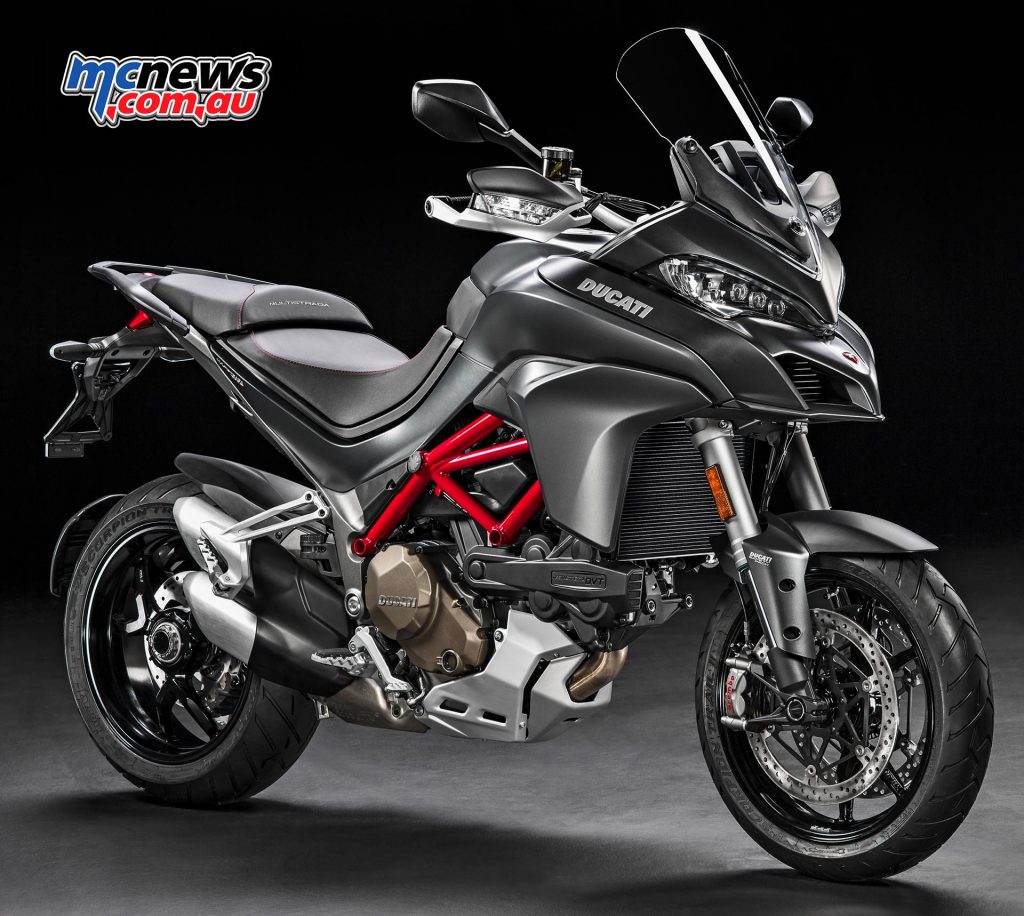
A key part of the Ducati Safety Pack, DTC is an intelligent system that acts as a filter between the rider’s right hand and the rear tyre. In just a few thousandths of a second, DTC can detect and control rear wheelspin, boosting performance and active safety significantly.
This system has eight different intervention levels. Each one has been programmed to provide a rear wheelspin tolerance that matches progressive levels of riding ability (classified from one to eight).
Level 1 has the lowest degree of system intervention, while level 8, intended for wet road surfaces, gives maximum prevention of wheelspin.
On the Multistrada 1200 DTC is incorporated into the Riding Modes. DTC levels within the four modes are initially pre-set but can subsequently be personalised and saved to suit individual riding styles or preferences.
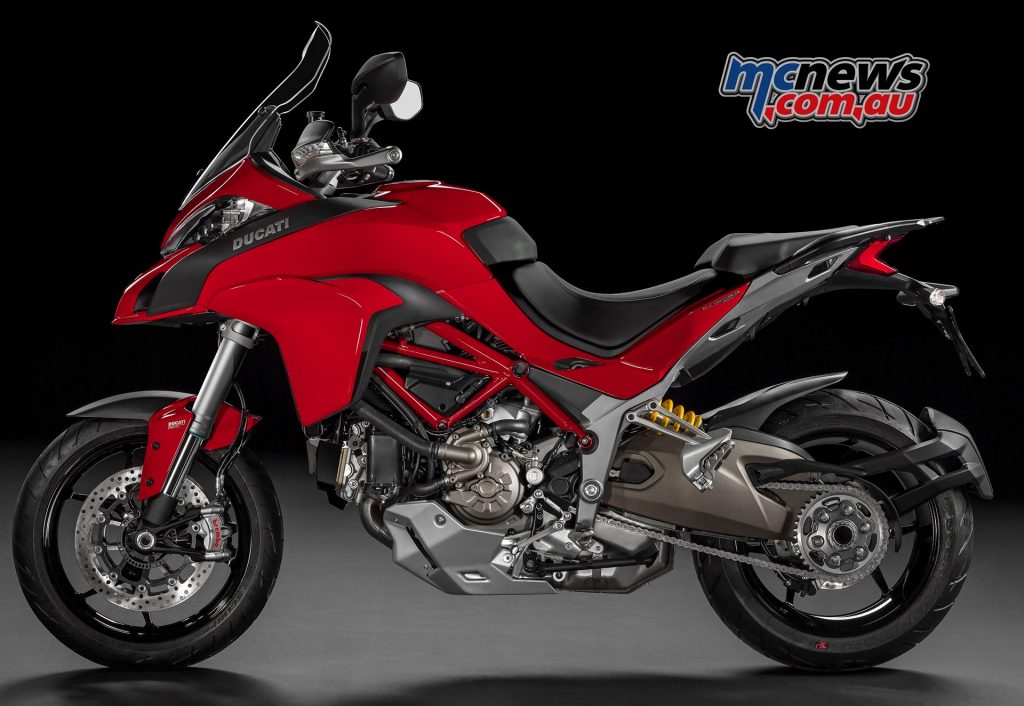
The Ducati Wheelie Control (DWC)system was developed from that used on the 1199 Superleggera: using data from the Bosch IMU, it analyses the attitude of the bike (to detect any front wheel lift) and controls torque and power accordingly to maximise acceleration in safety without destabilising balance. Like DTC, it features 8-level adjustment and is incorporated into the Riding Modes.
The dashboard consists of a large high-visibility LCD screen providing all primary and secondary information. On the Multistrada 1200 S the LCD is replaced by a full colour 5” TFT display.
The Multistrada 1200 S features a full LED headlight with Ducati Cornering Lights (DCL) functionality, which activates in curves to give optimal illumination of the road surface. Once again, it is the Bosch IMU inertial platform that makes this new function possible.
The Multistrada 1200 can be started without inserting a mechanical key, if its electronic key is within a 2 metre radius of the bike. The system automatically reads the key’s code, even if it is never removed from the rider’s pocket.
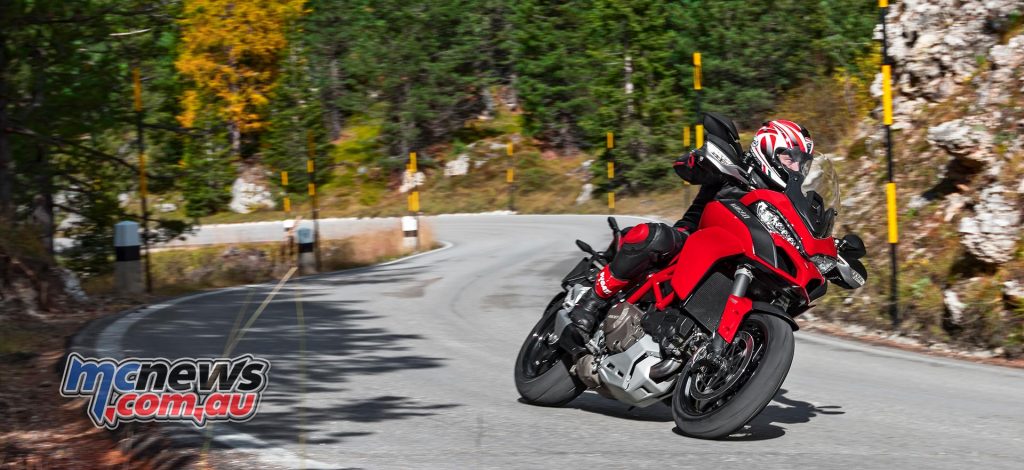
2017 Ducati Multistrada 1200 chassis
The DSS (Ducati Skyhook Suspension) Evolution system has now been developed even further with the 1200 S.
This evolved version includes a new Sachs fork with pressurised damper cartridge and low-friction stanchion, a new sensor to control the action of the rear damper plus new software that also handles data from the Bosch IMU and features new algorithms.
Included as standard on the Multistrada 1200 S, the DSS platform has a 48 mm front fork and a Sachs rear monoshock, both electronic; this allows the DSS to continuously adjust hydraulic damper compression and rebound using semi-active control to ensure correct vehicle balance.
The entire Multistrada 1200 family features a Brembo braking system with the Bosch 9.1ME ABS ECU, an integral part of the Ducati Safety Pack (DSP).
Cornering ABS makes use of the Bosch IMU (Inertial Measurement Unit) platform to optimise front and rear braking power even in critical situations with the bike at considerable lean angles.
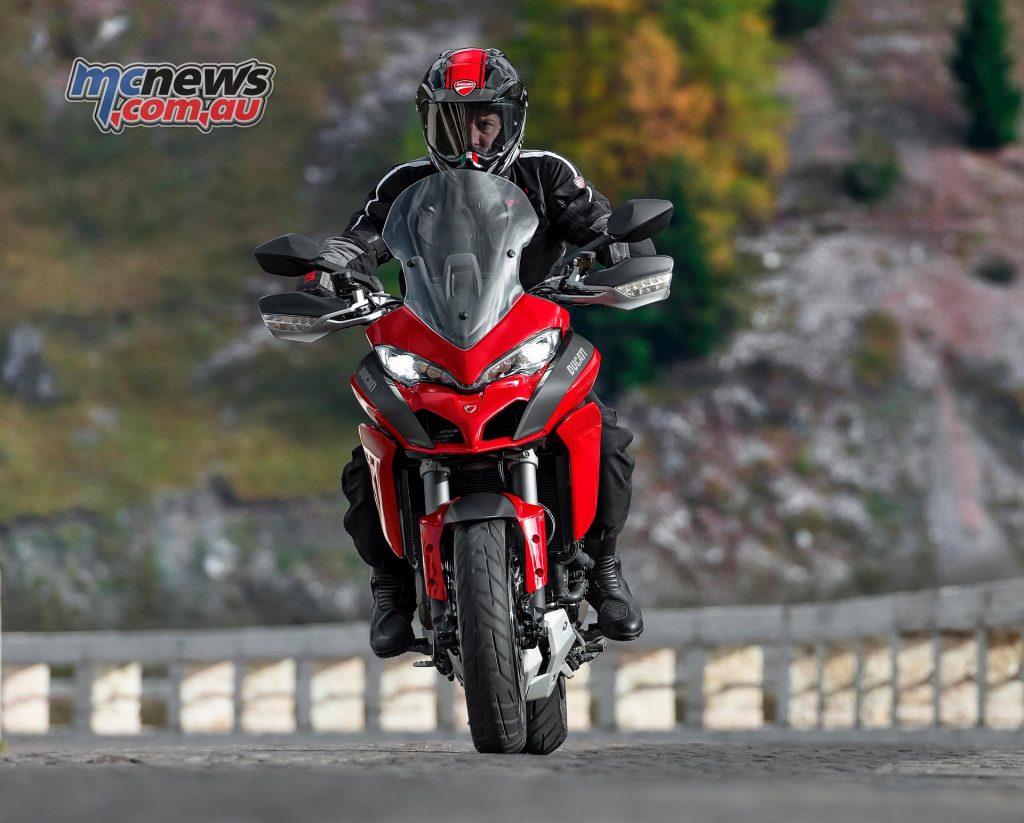
Thanks to its ABS control processor the Multistrada makes use of an Electronic Combined Braking System that is optimised for the Urban and Touring Riding Modes but has a lower degree of interaction in Sport mode where combined braking is less desirable.
Designed to improve rear tyre control during hard braking, the rear-wheel lift detection is fully enabled in Urban and Touring Riding Modes yet disabled in Sport and Enduro modes.
ABS can also be applied to the front wheel only, as is the case in Enduro Riding Mode, the aim being to allow rear wheel lock on the dirt. ABS can also be fully disabled from the instrument panel in any Riding Mode, and settings can be saved and recalled at the next Key-On.
The front braking system on the Multistrada 1200 features monobloc radially-mounted Brembo 4-piston callipers with 32 mm diameter pistons and 2 pads, a radial master cylinder with adjustable lever, and dual 320 mm discs.
At the rear, there is a single 265 mm diameter disc gripped by a floating calliper, again from Brembo. These components ensure top braking performance, a standard Ducati feature.
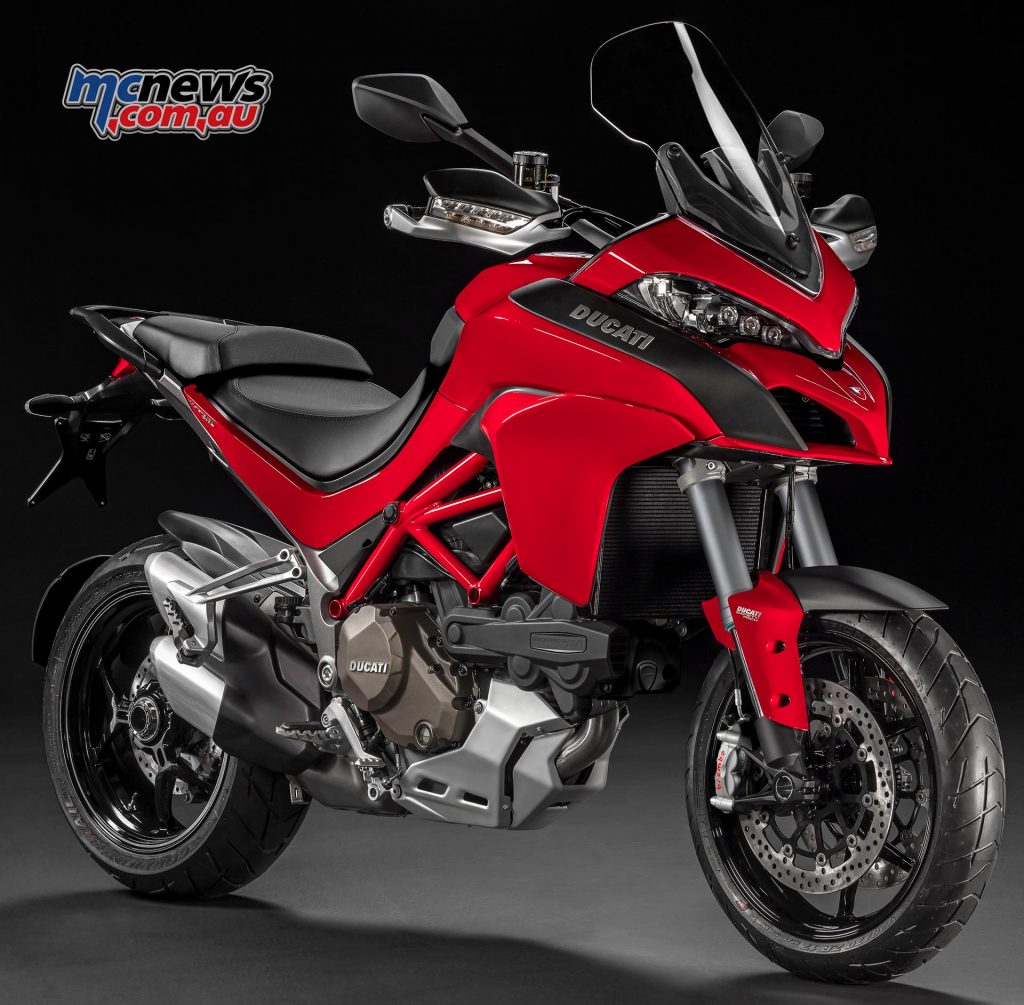
On the Multistrada 1200 S the braking system draws directly on solutions used by Ducati in Superbike competition: 330 mm discs at the front coupled with Brembo M50 monobloc radial 4-piston callipers with a 16 mm master cylinder.
On the Multistrada 1200 the ABS features the Vehicle Hold Control (VHC) system. When activated, the latter holds the vehicle steady by applying rear wheel braking (if unused automatic deactivation occurs after 9 seconds). This provides riders with easier restarts; this is because it modulates brake pressure during starts, leaving the rider free to focus on throttle and clutch control.
The function is activated when, with the bike at standstill and the kickstand up, the rider applies high pressure on the front or rear brake levers. On activation the system calculates and applies, according to vehicle status, pressure on the rear brake system by acting on the pump and the ABS control unit valves.
This system can be activated at all ABS levels, except for when the ABS is switched off.
The chassis design features a frontal Trellis frame with large-diameter yet thin tubing and two lateral subframes closed off by a rear load bearing element made of fibreglass-reinforced engineering plastic for maximum torsional rigidity.
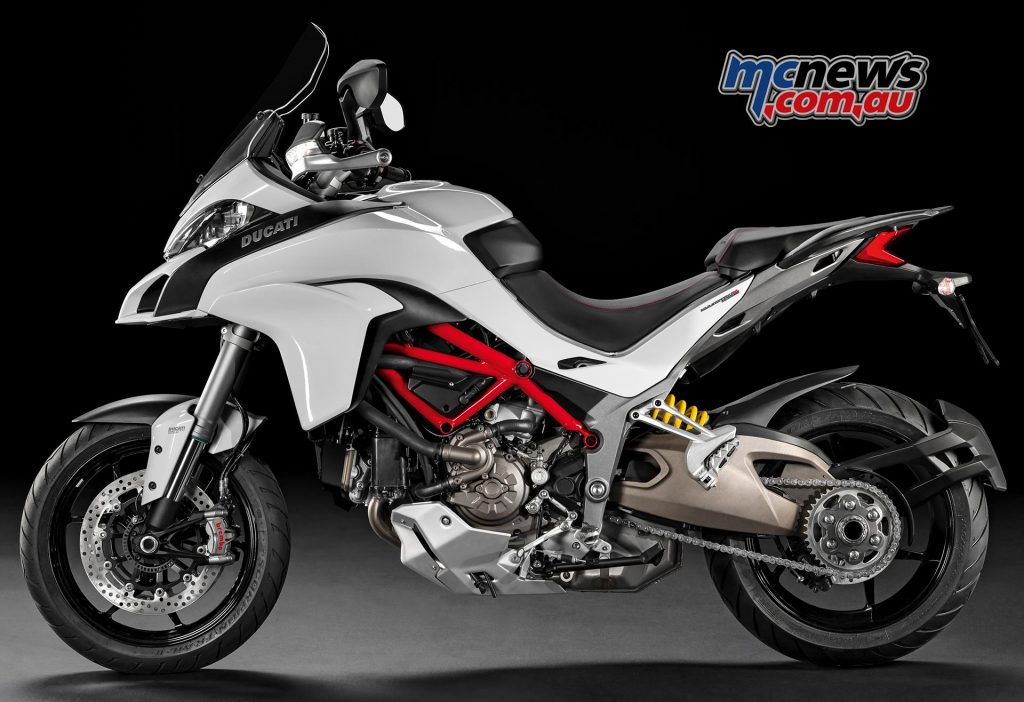
On the new Multistrada 1200 the frame has been stiffened further and the ground clearance has been raised by 20 mm to 180 mm, a big advantage when riding off-road.
The Multistrada 1200 also features the single-sided swingarm. This single, die-casted part, with fabricated and welded sections, provides a strong, hollow and lightweight component that contributes considerably to the Multistrada’s sure-footed handling.
The Multistrada 1200 features a 48 mm upside-down fork, with a dedicated cast lower, fully adjustable for spring preload, compression, and rebound.
The rear is controlled by a Sachs monoshock, also fully adjustable in compression and rebound and with spring preload adjustable by using a handy remote manual adjuster.
The spring works progressively, therefore providing augmented riding comfort even when the bike is fully laden.
The Multistrada 1200 S comes with a Sachs 48 mm front fork (with tubes in the typical ceramic grey) and rear damper, which are both semi-active and controlled by the Ducati Skyhook Suspension (DSS) Evolution system.
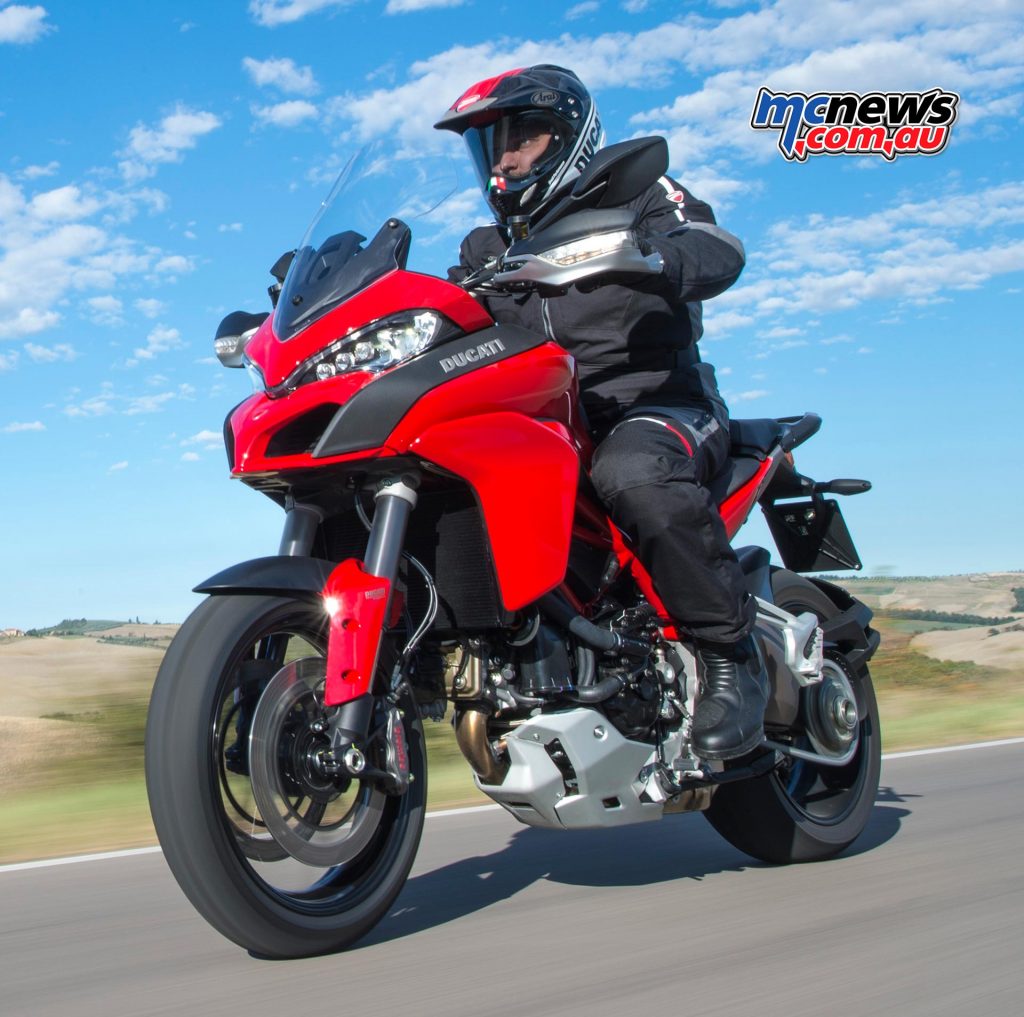
In addition to allowing compression and rebound adjustment of the hydraulic damper and rear spring preload (automatic and integrated into the Riding Modes or personalised via the on-board computer), the semi-active system exerts continuous control to keep the bike perfectly balanced.
Both suspension systems feature 170 mm travel (both front and rear), allowing for comfortable riding even with the bike loaded and, above all, safe handling on off-road routes.
The SCORPION Trail II, is standard on the Ducati Multistrada (190/55 R17 rear and 120/70 R17 front).
Pirelli was the first company to introduce the dual compound solution on certain sizes of rear enduro street tyre like the SCORPION Trail. Now, the Italian manufacturer is able to apply this technology on all rear tyres in the SCORPION™ Trail II range. Combining road and off-road performance to perfection. it has been designed to satisfy even the most demanding motorcyclists: its strong points include outstanding mileage, consistent performance throughout its lifecycle and first-rate running in the wet.
The Multistrada 1200, 1200 S and 1200 S D-Air feature light alloy Y-spoke wheels. All versions are equipped with 3.50 x 17’’ front wheels and 6.00 x 17’’ rear wheels.
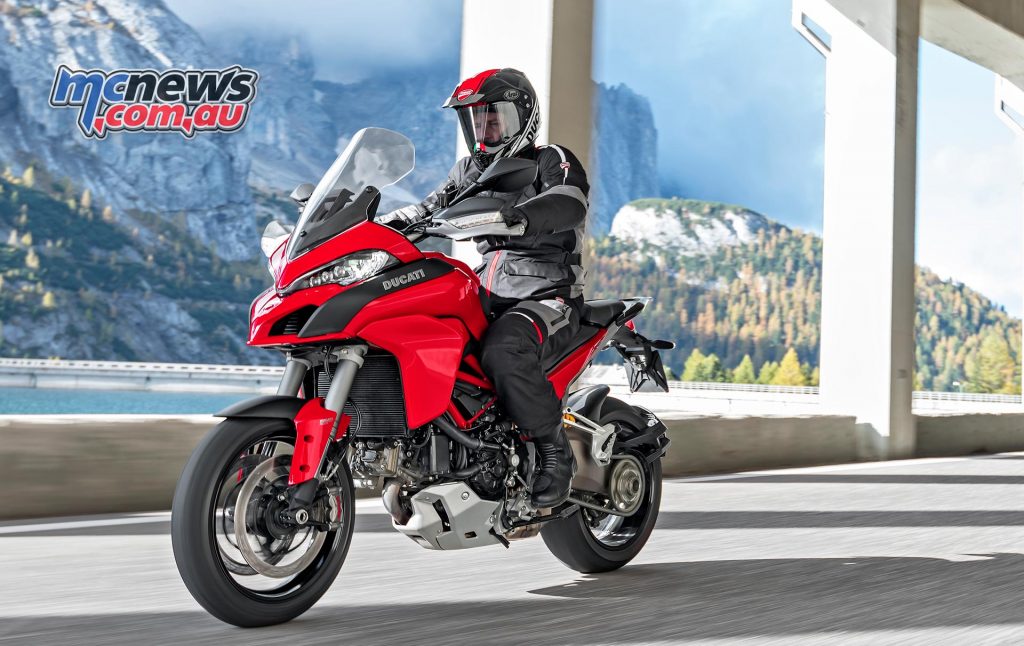
2017 Ducati Multistrada 1200 S D-AIR
Ducati, ever-attentive to new technology and safety, has also introduced a D-Air version of the Multistrada 1200 S which, in addition to the other as-standard features, provides an intelligent on-vehicle system that is wirelessly connected to airbag-equipped Ducati Apparel D-Air clothing by Dainese.
The Multistrada D-Air analyses the data and can open both rider and passenger in-jacket airbags in just 45 milliseconds, considerably reducing the risk of impact-related injuries.
The Multistrada 1200 S D-Air is also certified by TÜV SÜD, the authoritative German body responsible for wearable airbag standards.























